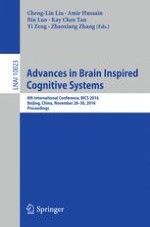2016 | OriginalPaper | Buchkapitel
Implementation of EEG Emotion Recognition System Based on Hierarchical Convolutional Neural Networks
verfasst von : Jinpeng Li, Zhaoxiang Zhang, Huiguang He
Erschienen in: Advances in Brain Inspired Cognitive Systems
Aktivieren Sie unsere intelligente Suche, um passende Fachinhalte oder Patente zu finden.
Wählen Sie Textabschnitte aus um mit Künstlicher Intelligenz passenden Patente zu finden. powered by
Markieren Sie Textabschnitte, um KI-gestützt weitere passende Inhalte zu finden. powered by
